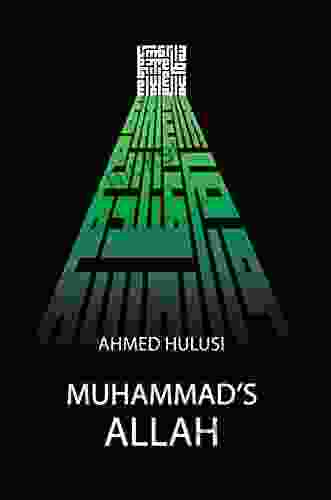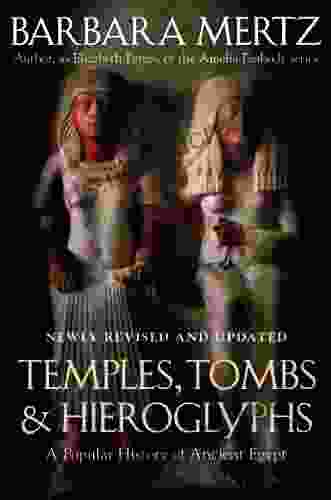An In-Depth Journey Through the Popular History of Ancient Egypt: Unveiling a Civilization's Grandeur

Ancient Egypt stands as a testament to human ingenuity, creativity, and organizational prowess. Its gripping history, spanning over three millennia, has captivated imaginations worldwide, inspiring countless works of literature, art, and film. This comprehensive article delves into the popular history of ancient Egypt, exploring the pivotal events, monumental achievements, and enigmatic mysteries that have defined this extraordinary civilization.
The Predynastic Period: The Seeds of a Civilization (c. 5500 - 3100 BCE)
Egypt's origins trace back to the fertile Nile River Valley, where nomadic communities gradually settled and developed agriculture. During the Predynastic Period, small city-states emerged along the riverbanks, each with its ruler and governing body. The rise of trade and cultural exchange paved the way for the unification of these entities under a single centralized authority.
4.5 out of 5
| Language | : | English |
| File size | : | 4990 KB |
| Text-to-Speech | : | Enabled |
| Screen Reader | : | Supported |
| Enhanced typesetting | : | Enabled |
| Word Wise | : | Enabled |
| Print length | : | 370 pages |
The Early Dynastic Period: The Dawn of Pharaohs (c. 3100 - 2686 BCE)
The Early Dynastic Period marked the beginning of dynastic rule in Egypt. King Narmer, widely considered the first pharaoh, united the kingdoms of Upper and Lower Egypt around 3100 BCE, ushering in a new era of power and prosperity. The pharaohs became absolute rulers, embodying both divine and earthly authority. They embarked on ambitious construction projects, erecting massive pyramids and temples that showcased their architectural prowess and unwavering belief in the afterlife.
The Old Kingdom: The Golden Age of Pyramid Building (c. 2686 - 2181 BCE)
The Old Kingdom witnessed the construction of some of Egypt's most iconic monuments. The pharaohs of the Fourth Dynasty, including Khufu, Khafre, and Menkaure, commissioned the colossal pyramids of Giza. These architectural marvels, meticulously designed and constructed with astonishing precision, have become symbols of ancient Egypt's grandeur and engineering capabilities.
The First Intermediate Period: Political Fragmentation and Cultural Renewal (c. 2181 - 2055 BCE)
The collapse of the Old Kingdom led to a period of political fragmentation known as the First Intermediate Period. Centralized authority weakened, and Egypt was divided into competing regional powers. Despite the political turmoil, this period also witnessed a resurgence of cultural and artistic expression.
The Middle Kingdom: A Resurgence of Power and Prosperity (c. 2055 - 1650 BCE)
The Middle Kingdom marked a revival of the Egyptian state. The pharaohs of the Eleventh and Twelfth Dynasties re-established a centralized monarchy, expanded the empire, and initiated ambitious building projects. The capital was moved to Thebes, where the magnificent Karnak Temple Complex was constructed.
The Second Intermediate Period: Foreign Invasions and Cultural Assimilation (c. 1650 - 1550 BCE)
The Second Intermediate Period saw the invasion of Egypt by the Hyksos, a foreign people from Asia. The Hyksos ruled Egypt for over a century, introducing new technologies and cultural influences. The native Egyptians gradually absorbed these foreign elements, leading to a blend of Egyptian and Near Eastern traditions.
The New Kingdom: The Empire's Zenith (c. 1550 - 1070 BCE)
The New Kingdom ushered in an unprecedented era of Egyptian power and influence. The pharaohs of the Eighteenth Dynasty, including Thutmose III, Hatshepsut, and Amenhotep III, expanded Egypt's borders to their greatest extent, conquering vast territories in Nubia, Syria, and Palestine. The construction of monumental temples, including the Temple of Amun at Karnak, and the creation of lavish tombs in the Valley of the Kings transformed Egypt into a cultural and artistic powerhouse.
The Third Intermediate Period: A Time of Turmoil and Transition (c. 1070 - 664 BCE)
The collapse of the New Kingdom ushered in a period of political instability and foreign invasions. Egypt was divided into competing regions, and the weak pharaohs struggled to maintain control. The rise of mercenary armies and the influence of priests marked a significant departure from the traditional system of government.
The Late Period: A Resurgence of Egyptian Culture and Independence (c. 664 - 332 BCE)
The Late Period witnessed a resurgence of Egyptian power and culture. The pharaohs of the Twenty-Sixth Dynasty, including Psamtik I, Necho II, and Apries, expelled foreign invaders and restored Egypt's independence. This period was marked by a revival of traditional Egyptian religion and the construction of new temples and monuments.
The Ptolemaic Period: Greek Influences and Roman Rule (332 - 30 BCE)
In 332 BCE, Alexander the Great conquered Egypt, ushering in the Ptolemaic Period. Alexandria became the center of power and learning, blending Egyptian culture with Greek influences. The pharaohs of the Ptolemaic dynasty, including Cleopatra VII, ruled Egypt as a Hellenistic kingdom until the Roman conquest in 30 BCE.
The Roman Period: Egypt as a Roman Province (30 BCE - 641 CE)
Under Roman rule, Egypt became a wealthy and prosperous province. The Romans constructed new infrastructure, including roads, aqueducts, and temples. Alexandria remained a major cultural hub, while Egyptian religion continued to be practiced alongside Roman cults. The spread of Christianity eventually supplanted traditional Egyptian beliefs.
The Arab Conquest and the Rise of Islam (641 - 1517 CE)
In 641 CE, Arab forces conquered Egypt, bringing with them Islam. The Arabs established Cairo as the new capital and gradually introduced their language, culture, and religion to the population. Over time, Egypt became a major center of Islamic learning and culture.
The Ottoman Period: Egypt as an Ottoman Province (1517 - 1882 CE)
In 1517 CE, the Ottoman Empire conquered Egypt, making it a province of the vast Islamic empire. The Ottomans appointed governors to rule Egypt but allowed a significant degree of local autonomy. Egypt remained an important center of trade and cultural exchange.
The Modern Period: Independence and the Rise of Nationalism (1882 - Present)
In 1882, Britain invaded and occupied Egypt, establishing a de facto protectorate that lasted for over half a century. Nationalist sentiments grew during the occupation, culminating in Egypt's independence in 1922. The country navigated various political and economic challenges, eventually achieving stability and economic growth in recent decades.
Ancient Egypt remains a source of fascination and inspiration for people worldwide. Its captivating history, monumental achievements, and enduring mysteries continue to captivate imaginations. The popular history of this extraordinary civilization invites us to contemplate the power of human creativity, the fragility of power, and the enduring legacy of a people who shaped the course of world history. As we delve into the annals of ancient Egypt, may we find insights into our own history, culture, and the boundless potential of the human spirit.
4.5 out of 5
| Language | : | English |
| File size | : | 4990 KB |
| Text-to-Speech | : | Enabled |
| Screen Reader | : | Supported |
| Enhanced typesetting | : | Enabled |
| Word Wise | : | Enabled |
| Print length | : | 370 pages |
Do you want to contribute by writing guest posts on this blog?
Please contact us and send us a resume of previous articles that you have written.
 Fiction
Fiction Non Fiction
Non Fiction Romance
Romance Mystery
Mystery Thriller
Thriller SciFi
SciFi Fantasy
Fantasy Horror
Horror Biography
Biography Selfhelp
Selfhelp Business
Business History
History Classics
Classics Poetry
Poetry Childrens
Childrens Young Adult
Young Adult Educational
Educational Cooking
Cooking Travel
Travel Lifestyle
Lifestyle Spirituality
Spirituality Health
Health Fitness
Fitness Technology
Technology Science
Science Arts
Arts Crafts
Crafts DIY
DIY Gardening
Gardening Petcare
Petcare Supana Onikage
Supana Onikage Aubre Tompkins Cnm
Aubre Tompkins Cnm Jose Antonio Fernandez
Jose Antonio Fernandez Boy Scouts Of America
Boy Scouts Of America Mickey Royal
Mickey Royal Jeff Wallach
Jeff Wallach Todd Whitaker
Todd Whitaker Adrienne Young
Adrienne Young Tina L Quick
Tina L Quick Andres Mooring
Andres Mooring Aenghus Chisholme
Aenghus Chisholme Stephen Brennan
Stephen Brennan Johnathon Allen
Johnathon Allen Sam L Savage
Sam L Savage Max Porter
Max Porter Annie Gilbert Coleman
Annie Gilbert Coleman George A Morgan
George A Morgan Vedant J Maheshwari
Vedant J Maheshwari Malachi Martin
Malachi Martin Helen Xander
Helen Xander M Barlow Pepin
M Barlow Pepin Noson S Yanofsky
Noson S Yanofsky Agatha Christie
Agatha Christie Eric Adelson
Eric Adelson Trevor Rowley
Trevor Rowley Patrick Hutchinson
Patrick Hutchinson Tony Herman
Tony Herman Barbara Mertz
Barbara Mertz Michael Brooks
Michael Brooks Erin Eileen Leigh
Erin Eileen Leigh Brian K Jones
Brian K Jones Aditya Chatterjee
Aditya Chatterjee Adam Schupak
Adam Schupak Gary R Miller
Gary R Miller John Muir
John Muir Laura Zinn Fromm
Laura Zinn Fromm Adrian Smith
Adrian Smith John Shelton Reed
John Shelton Reed Robert Stone
Robert Stone Paul Embrechts
Paul Embrechts Peggy Tharpe
Peggy Tharpe Greg Guest
Greg Guest Ben Marcus
Ben Marcus Tom Ryan
Tom Ryan Sun Yung Shin
Sun Yung Shin Lucy Wolfe
Lucy Wolfe Ademar Aguiar
Ademar Aguiar J Lynn Bailey
J Lynn Bailey Moon Ho Jung
Moon Ho Jung Tim Hodkinson
Tim Hodkinson Dale F Bloom
Dale F Bloom Jeff Hutton
Jeff Hutton Kamala Harris
Kamala Harris Philip Striano
Philip Striano C W Ceram
C W Ceram Terrence W Deacon
Terrence W Deacon Robyn Wideman
Robyn Wideman Kara Powell
Kara Powell Jason Browne
Jason Browne Doki Cohen
Doki Cohen Michael Bronski
Michael Bronski Charles D Amico
Charles D Amico Gregory Curtis
Gregory Curtis Stephen Tignor
Stephen Tignor Team Golfwell
Team Golfwell Harry Pearson
Harry Pearson Elias M Stein
Elias M Stein Herb Carnegie
Herb Carnegie Elizabeth Parker
Elizabeth Parker Adrian Wells
Adrian Wells Carl Johan Calleman
Carl Johan Calleman Barry Melrose
Barry Melrose Matt Morton
Matt Morton Saidiya V Hartman
Saidiya V Hartman John Hillman
John Hillman Afrodite Rossini
Afrodite Rossini Amelia Simmons
Amelia Simmons Joshua Baker
Joshua Baker Hans Reichenbach
Hans Reichenbach Suzy Giordano
Suzy Giordano Gary Dean Quesenberry
Gary Dean Quesenberry Michele Angello
Michele Angello Bruce Rosenfeld
Bruce Rosenfeld Jordan Bone
Jordan Bone Frank C Keil
Frank C Keil Barry Brown
Barry Brown Andrea Ros
Andrea Ros Alexandra Horowitz
Alexandra Horowitz Peter Wayne
Peter Wayne Adiba Jaigirdar
Adiba Jaigirdar Amy Blakeslee
Amy Blakeslee Timothy Gowers
Timothy Gowers Richard Ray
Richard Ray Chuck Mckeever
Chuck Mckeever Konstantinos Mylonas
Konstantinos Mylonas Thomas E Gilson
Thomas E Gilson Alexi Pappas
Alexi Pappas Marta Alexander
Marta Alexander David Blatner
David Blatner Adrian Bejan
Adrian Bejan Afra J Zomorodian
Afra J Zomorodian Dwayne Bryant
Dwayne Bryant Leslie T Chang
Leslie T Chang Marta Szabo
Marta Szabo Susan Garcia
Susan Garcia Larry Clay
Larry Clay Susan Rovezzi Carroll
Susan Rovezzi Carroll Avner Ash
Avner Ash Julia V Taylor
Julia V Taylor Jorge Luis Delgado
Jorge Luis Delgado Adams Media
Adams Media Haym Kruglak
Haym Kruglak Harper Paris
Harper Paris Kirk Deeter
Kirk Deeter Elizabeth De Zulueta
Elizabeth De Zulueta Zachery Knowles
Zachery Knowles Darrell Huff
Darrell Huff Ae Marling
Ae Marling Gianni Filippini
Gianni Filippini Mary Roach
Mary Roach Mary Ann Drummond
Mary Ann Drummond Timothy Leffel
Timothy Leffel Philip Maffetone
Philip Maffetone E Lockhart
E Lockhart Adam Weymouth
Adam Weymouth Robin Jones Gunn
Robin Jones Gunn George Makari
George Makari Eric Hoffer
Eric Hoffer Myatt Murphy
Myatt Murphy David Mcraney
David Mcraney Daniel Sobieck
Daniel Sobieck Claire Heffron
Claire Heffron Heidi Dusek
Heidi Dusek Marissa Anderson
Marissa Anderson Kevin Van Whye
Kevin Van Whye Robin Suerig Holleran
Robin Suerig Holleran Don Webb
Don Webb Jonathan Kozol
Jonathan Kozol Adrian Li
Adrian Li George Yule
George Yule Adrian May
Adrian May Joanne Jamrosz
Joanne Jamrosz Jo Deurbrouck
Jo Deurbrouck Karl Sigmund
Karl Sigmund Thich Nhat Hanh
Thich Nhat Hanh Tessa Bielecki
Tessa Bielecki Bridget Bishop
Bridget Bishop Adam Raider
Adam Raider Yusra Mardini
Yusra Mardini Adam Shaw
Adam Shaw Mayuri Saxena
Mayuri Saxena Jenny Jones
Jenny Jones Robin L Rielly
Robin L Rielly Mel Levine
Mel Levine Bonnie Raingruber
Bonnie Raingruber Helen Scheuerer
Helen Scheuerer Cameo Renae
Cameo Renae Leigh Bardugo
Leigh Bardugo Dan Fagin
Dan Fagin Joseph Pred
Joseph Pred Kenneth Martz
Kenneth Martz Melanie Mitchell
Melanie Mitchell Jake Schafft
Jake Schafft Pete Jordan
Pete Jordan Yuu Tanaka
Yuu Tanaka Brian J Lang
Brian J Lang Seymour Lipschutz
Seymour Lipschutz Carol Grbich
Carol Grbich Natania Barron
Natania Barron Jennifer Justus
Jennifer Justus Joan Naidorf
Joan Naidorf Baby Professor
Baby Professor Taylor Markarian
Taylor Markarian Daniel Kahneman
Daniel Kahneman Jacqueline Houtman
Jacqueline Houtman Dirk Baker
Dirk Baker Kim Gosselin
Kim Gosselin Joseph A Durlak
Joseph A Durlak Rich Froning
Rich Froning Kendare Blake
Kendare Blake David Graeber
David Graeber Debra D Sullivan
Debra D Sullivan The Times Mind Games
The Times Mind Games Timothy Malcolm
Timothy Malcolm Kevin J Cheek
Kevin J Cheek Marty Ofonagoro
Marty Ofonagoro Paul Weamer
Paul Weamer Isabella Rotman
Isabella Rotman Lori Bregman
Lori Bregman Adele Faber
Adele Faber Thomas Pranio
Thomas Pranio Sherrie Nist Olejnik
Sherrie Nist Olejnik Shawn Thornton
Shawn Thornton Lindsay Burton
Lindsay Burton Allen Hedrick
Allen Hedrick Mark Bittman
Mark Bittman Richard J Larsen
Richard J Larsen Frederick J Gravetter
Frederick J Gravetter Adelheid A M Nicol
Adelheid A M Nicol Colin Pask
Colin Pask Bryan Willis
Bryan Willis John Nero
John Nero Akilah Hughes
Akilah Hughes Louisa J Morgan
Louisa J Morgan Adib Khorram
Adib Khorram William Smith
William Smith David A Whitsett
David A Whitsett Barry Glassner
Barry Glassner Nancy Mellon
Nancy Mellon Ari Marmell
Ari Marmell Lakshya Trivedi
Lakshya Trivedi Adrienne Rawlinson
Adrienne Rawlinson Adrian Lobley
Adrian Lobley Adele Jones
Adele Jones John D Whidden
John D Whidden Adrian Bardon
Adrian Bardon Libbi Palmer
Libbi Palmer Anita Shreve
Anita Shreve Michael J Domitrz
Michael J Domitrz Jd Richey
Jd Richey Alvin E Roth
Alvin E Roth Carmen Juncal
Carmen Juncal Katarzyna Wac
Katarzyna Wac Gary Lonesborough
Gary Lonesborough Liao Yiwu
Liao Yiwu Suzanne Swedo
Suzanne Swedo Adrienne Engleman Pga Fellow Professional
Adrienne Engleman Pga Fellow Professional Jacqueline Winspear
Jacqueline Winspear Seth Berkman
Seth Berkman Ken Dehart
Ken Dehart Veronica Strang
Veronica Strang Sarah Stillman
Sarah Stillman Heather Lende
Heather Lende Cynthia A Robertson
Cynthia A Robertson Nomi Prins
Nomi Prins Ken Jeremiah
Ken Jeremiah Adharanand Finn
Adharanand Finn Joanna Warrington
Joanna Warrington Adele Westbrook
Adele Westbrook Shmuel Goldberg
Shmuel Goldberg Max Mason
Max Mason Zoe Clark Coates
Zoe Clark Coates Asrai Devin
Asrai Devin Melvin Konner
Melvin Konner Gerry Lopez
Gerry Lopez Robert C Renneberg
Robert C Renneberg Agnieszka Latocha
Agnieszka Latocha Kathy A Zahler
Kathy A Zahler Danny Wuerffel
Danny Wuerffel Michael D Rich
Michael D Rich Meganne Forbes
Meganne Forbes John Feinstein
John Feinstein Douglas H Macdonald
Douglas H Macdonald Adam Serwer
Adam Serwer Adriana Rabinovich
Adriana Rabinovich Adrian Wilson
Adrian Wilson Pearl S Buck
Pearl S Buck Ahmad Al Sukaini
Ahmad Al Sukaini Rachel Ormston
Rachel Ormston Bruce Hood
Bruce Hood Paul L Wachtel
Paul L Wachtel Jess Thomson
Jess Thomson Archie Brain
Archie Brain Adrienne Mayor
Adrienne Mayor Terri Paajanen
Terri Paajanen Alisscia B
Alisscia B Karen J Bun
Karen J Bun John D Mccann
John D Mccann Zainab Yate
Zainab Yate Lisa Mosconi
Lisa Mosconi Andrew Beyer
Andrew Beyer Meg Cox
Meg Cox Kevin Biggar
Kevin Biggar John Graves
John Graves Elizabeth Carman
Elizabeth Carman Adam Pertman
Adam Pertman Si Robertson
Si Robertson Nicole Bailey
Nicole Bailey Emily Larson
Emily Larson Dr Paul Lam
Dr Paul Lam Basil Pickard
Basil Pickard Jenna Parker
Jenna Parker Tommy Caldwell
Tommy Caldwell Eliane Kurbegov
Eliane Kurbegov Trisha Yearwood
Trisha Yearwood Darron L Clark
Darron L Clark Balazs Csigi
Balazs Csigi Khalid Khashoggi
Khalid Khashoggi Paul Parker
Paul Parker Joe Posnanski
Joe Posnanski Rusty Richards
Rusty Richards Susan Adams
Susan Adams Kirsten Watson
Kirsten Watson Tony Grice
Tony Grice Christopher Pike
Christopher Pike Brittany Konsella
Brittany Konsella Nicholas Carr
Nicholas Carr Stephen John Peel
Stephen John Peel V C Andrews
V C Andrews Scott O Dell
Scott O Dell Jack Heinowitz
Jack Heinowitz Michael Mcteigue
Michael Mcteigue Hannes Wessels
Hannes Wessels Charles R Swindoll
Charles R Swindoll Michelle Reid
Michelle Reid Jeff Van West
Jeff Van West Rick Sapp
Rick Sapp Spike Walker
Spike Walker Adrian Gonzales
Adrian Gonzales Don Nehlen
Don Nehlen Julie Gore
Julie Gore George Sheehan
George Sheehan Bettina Elias Siegel
Bettina Elias Siegel Peter Shirley
Peter Shirley Alicia Young
Alicia Young Angel Millar
Angel Millar Bob Forsch
Bob Forsch Kevin Greene
Kevin Greene Alexandra Christo
Alexandra Christo Linus Wilson
Linus Wilson Mona Liza Santos
Mona Liza Santos Lydia Kang
Lydia Kang Craig Wiggers
Craig Wiggers Tim Wise
Tim Wise Adam Rutherford Phd
Adam Rutherford Phd Herbert Clyde Lewis
Herbert Clyde Lewis Jeff Wiltse
Jeff Wiltse Nastassja Martin
Nastassja Martin Adrienne Tooley
Adrienne Tooley Meghan Mccarthy Mcphaul
Meghan Mccarthy Mcphaul Marcus Heerdt
Marcus Heerdt Greg Wyshynski
Greg Wyshynski Loren Cordain
Loren Cordain Mihaly Csikszentmihalyi
Mihaly Csikszentmihalyi John Martin Taylor
John Martin Taylor Sarah Clarkson
Sarah Clarkson Doris J Barnes
Doris J Barnes Heather Worthington
Heather Worthington Letitia Baldrige
Letitia Baldrige Jay Mcgraw
Jay Mcgraw Lily Luchesi
Lily Luchesi Dennis Cassinelli
Dennis Cassinelli Deborah Grace White
Deborah Grace White John North
John North Brad Rock
Brad Rock Marc Roche
Marc Roche Valerie Melvin
Valerie Melvin Amy Racina
Amy Racina Julie Mohan
Julie Mohan Kate Wickers
Kate Wickers Kathryn Casey
Kathryn Casey Duffy Gaver
Duffy Gaver Lynne Kelly
Lynne Kelly Wendy Heard
Wendy Heard Elias Johnson
Elias Johnson Phil Cousineau
Phil Cousineau Gina Fava
Gina Fava Amby Cooper
Amby Cooper Frans X Plooij
Frans X Plooij David Sloan Wilson
David Sloan Wilson Mariel Hemingway
Mariel Hemingway Joseph Bruchac
Joseph Bruchac Fergus Connolly
Fergus Connolly Adam Stevenson
Adam Stevenson Charles Dougherty
Charles Dougherty Timothy J Baroni
Timothy J Baroni James Goi Jr
James Goi Jr Martin Dorey
Martin Dorey Susannah Cahalan
Susannah Cahalan Collins Easy Learning
Collins Easy Learning James P Lewis
James P Lewis Dorothy Hamill
Dorothy Hamill Laura Fuentes
Laura Fuentes Shelley Metten M S Ph D
Shelley Metten M S Ph D Kieran Higgins
Kieran Higgins Cindy Nana Parente
Cindy Nana Parente Herbert L Roitblat
Herbert L Roitblat Peter L Bernstein
Peter L Bernstein Adam Shoalts
Adam Shoalts Mike Jacker
Mike Jacker Brad Borkan
Brad Borkan Ken Robinson
Ken Robinson Normandi Ellis
Normandi Ellis Allie Duzett
Allie Duzett American Alpine Club
American Alpine Club Agnes Light
Agnes Light Kosol Ouch
Kosol Ouch Rebecca Lowe
Rebecca Lowe Ashley Bugge
Ashley Bugge Maurice Isserman
Maurice Isserman Kathy Toney
Kathy Toney Mildred Johnson
Mildred Johnson John Passmore
John Passmore P Brian Noble
P Brian Noble Afsaneh Moradian
Afsaneh Moradian James C Dobson
James C Dobson Nelson L Schuman
Nelson L Schuman Natalie Guenther
Natalie Guenther Edgar Giffenig
Edgar Giffenig Karen Weekly
Karen Weekly Amy Bartelloni
Amy Bartelloni Luca Vargiu
Luca Vargiu Eric Orton
Eric Orton Timothy D Wilson
Timothy D Wilson Nicholas Kardaras
Nicholas Kardaras Shami Stovall
Shami Stovall Michael S Weisbach
Michael S Weisbach Sam Fadala
Sam Fadala Steve Mchugh
Steve Mchugh Warwick Rodwell
Warwick Rodwell Ilene Skeen
Ilene Skeen Emily Ross
Emily Ross John Vaillant
John Vaillant S Yates
S Yates Susy Lee
Susy Lee Ayelet Fishbach
Ayelet Fishbach James B Marsh
James B Marsh Joe Varady
Joe Varady Michael H Lubetsky
Michael H Lubetsky Dr James Dinicolantonio
Dr James Dinicolantonio Ron Elbe
Ron Elbe Anita Bean
Anita Bean Jasmine Taylor
Jasmine Taylor Aftab Hamid
Aftab Hamid Gerry Giovinco
Gerry Giovinco James Lovelock
James Lovelock Heather D Yates
Heather D Yates Alex Aster
Alex Aster Mark Cucuzzella
Mark Cucuzzella Adam Woodbeck
Adam Woodbeck Renato Rosaldo
Renato Rosaldo Dagogo Altraide
Dagogo Altraide Wayne Curtis
Wayne Curtis Jane M Healy
Jane M Healy Staci Frenes
Staci Frenes Scott B Williams
Scott B Williams Monique Boutsiv
Monique Boutsiv Adam Ploszaj
Adam Ploszaj C K Murray
C K Murray Alex Tremm
Alex Tremm Fred Luskin
Fred Luskin Amy Kovarick
Amy Kovarick Ursula Goodenough
Ursula Goodenough David Churchman
David Churchman Sergei Urban
Sergei Urban D J Conway
D J Conway Marie Colvin
Marie Colvin Zhongwen Fu
Zhongwen Fu Gena Showalter
Gena Showalter Nicole Spindler
Nicole Spindler James Mcdougall
James Mcdougall Sylvia Nasar
Sylvia Nasar Leckie
Leckie Max Jammer
Max Jammer Christy Isbell
Christy Isbell Bobbie Ziemer
Bobbie Ziemer Alvin Boyd Kuhn
Alvin Boyd Kuhn Mark Matlock
Mark Matlock Andrea Huneeus Vergara
Andrea Huneeus Vergara Christina Cimorelli
Christina Cimorelli Gene Hill
Gene Hill Issendai Bechau
Issendai Bechau Mick Dolan
Mick Dolan Philip Gardiner
Philip Gardiner Adrian Wallwork
Adrian Wallwork C S Pacat
C S Pacat Simon Needham
Simon Needham Noah Michaud
Noah Michaud Frank Delaney
Frank Delaney Master Sajid Ahmed
Master Sajid Ahmed Alondra Nelson
Alondra Nelson Ed Hanczaryk
Ed Hanczaryk Walter Rhein
Walter Rhein Michael Kerrisk
Michael Kerrisk Slavka Bodic
Slavka Bodic Joe Harkness
Joe Harkness Christina Shelley Albrecht
Christina Shelley Albrecht Melinda Folse
Melinda Folse Oscar Ratti
Oscar Ratti Rod Heckelman
Rod Heckelman Ahmed Hulusi
Ahmed Hulusi Peter Marshall
Peter Marshall
Light bulbAdvertise smarter! Our strategic ad space ensures maximum exposure. Reserve your spot today!
 Robin PowellFollow ·6.5k
Robin PowellFollow ·6.5k Jim CoxFollow ·15.6k
Jim CoxFollow ·15.6k Junot DíazFollow ·9.6k
Junot DíazFollow ·9.6k Jack LondonFollow ·4.7k
Jack LondonFollow ·4.7k Gregory WoodsFollow ·6.5k
Gregory WoodsFollow ·6.5k Isaac BellFollow ·13.7k
Isaac BellFollow ·13.7k Joseph FosterFollow ·2.4k
Joseph FosterFollow ·2.4k Eric NelsonFollow ·2.8k
Eric NelsonFollow ·2.8k
 Cruz Simmons
Cruz SimmonsThe Ultimate Canadian Cookbook: A Culinary Exploration of...
Journey into the heart of Canadian cuisine...

 Grayson Bell
Grayson BellAn Initial Exploration Of The Diminishing Role Of Facts...
When we think of the digital age, we often...

 Jayden Cox
Jayden CoxHollywood Trainer's Real Guide to Getting the Body You've...
Achieving a fit and...

 Octavio Paz
Octavio PazGood Walk Spoiled: An Exploration of the Effects of...
Dogs are often hailed...

 Jerome Powell
Jerome PowellMuhammad Allah Ahmed Hulusi: A Visionary Scholar and...
Muhammad Allah Ahmed Hulusi...
4.5 out of 5
| Language | : | English |
| File size | : | 4990 KB |
| Text-to-Speech | : | Enabled |
| Screen Reader | : | Supported |
| Enhanced typesetting | : | Enabled |
| Word Wise | : | Enabled |
| Print length | : | 370 pages |













